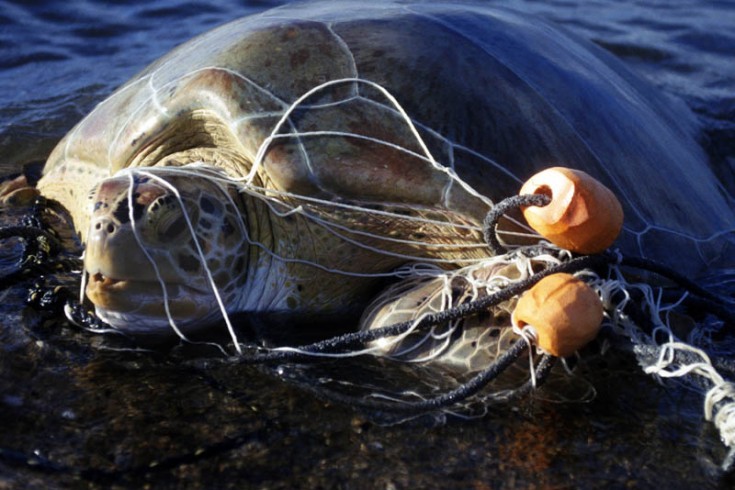Ocean Ghosts Are Deadly

Yes, there are ghosts in the ocean. Not your typical ghouls, goblins or gremlins; but there are innumerous inanimate creatures posing far greater danger to the underwater realm: ghost nets.
Ghost nets are just one component of the larger issue of derelict fishing gear, which comprises nets, lines, crab, lobster and shrimp pots, and other recreational or commercial fishing equipment that has been lost, abandoned or discarded in the marine environment. With the introduction of synthetic gear following WWII, the effectiveness of fishing gear to snag and capture fish has become extraordinary.
Unfortunately, too often this gear becomes lost, abandoned or discarded in the marine environment where it can remain intact for hundreds of years. The same characteristics that make fishing nets incredibly effective at catching fish also create an extraordinary hazard when they go afloat. Once adrift in the ocean, derelict gear can remain intact for years destroying habitat, threatening navigation and entangling fishes, sea turtles, whales and other marine animals; this latter consequence is known as “ghost fishing.”
The impact of ghost fishing at the species, population and ecosystem level remain unknown largely because entanglements and ingestion of fishing gear occurs at-sea in the open ocean, where human observations of these incidents is unlikely and rare. Still, during the past 27 International Coastal Cleanups, volunteers have found 2,780 animals entangled in derelict fishing gear. Some entangled species include bottlenose dolphins; harbor porpoise; harbor seals; green, loggerhead, hawksbill and Kemp’s ridley sea turtles; and bull sharks—and these incidents represent only what is found on a single day each year.
Just last month, a commercial gill net more than 200 feet in length and weighing more than 1,000 pounds, became entangled on an artificial reef approximately two miles off Florida’s southern Broward County coast. Artificial reefs are often decommissioned marine structures that are decontaminated and then strategically positioned in the marine environment to attract fish and serve as surface area for coral and other marine life. The full extent of the net’s impact is uncertain, but “the net has snared and killed grunts, other reef fish and a loggerhead turtle, whose skeleton was found hanging from it.”
A Florida-based marine salvage company has been contracted to extract the net from the 100 feet of water in which it sits, and Covanta Energy will burn the net to generate electricity at its Doral energy-from-waste facility.
Gill nets—or nets with a mesh size larger than two inches— have been banned in Florida’s waters since 1999, which means the ghost net entangled on the Tenneco Tower was lost elsewhere in the Atlantic or Caribbean, or was lost prior to ’99 and has been drifting ever since. In either case, this instance reinforces the notion that derelict gear persist in the marine environment for long very long periods of time with the ability to float great distances.
And as these ghost nets continue to haunt the ocean unabated for years on end, the size and scale of their bycatch remains unknown.